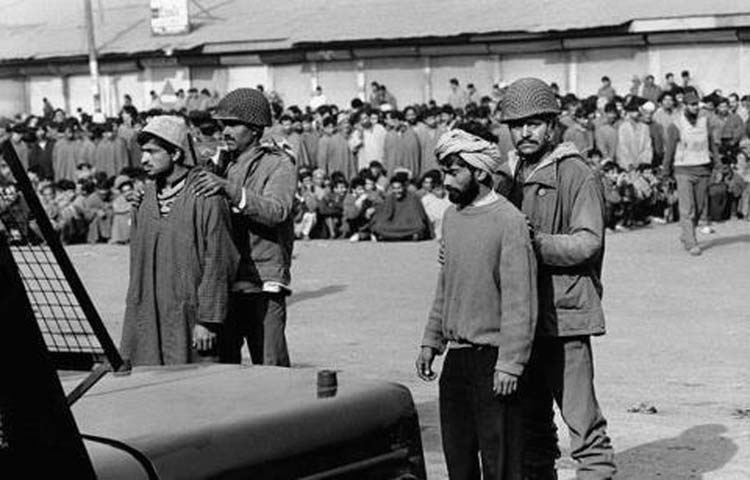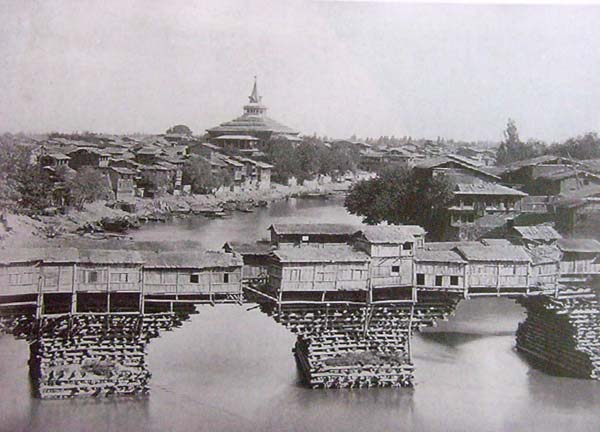Farah Bashir, author of Rumours of Spring: A Girlhood in Kashmir that Harper Collins published this spring explains why she is restless and anxious every time it is Eid.

KASHMIR LIFE (KL): Why as a student, you were so unhappy to go to medical school or any other professional course?
FARAH BASHIR (FB): After the insurgency erupted against New Delhi in 1989, my interest in studies began fluctuating. At a time, when people around me were getting killed, being maimed and homes were being burnt, I lost focus and interest in studies. It took a lot of effort for me to maintain the enthusiasm of doing well to score good grades in exams. In the chapter (from my book) The Shadow of a Siege, I have written about the Hazratbal siege in October 1993, which coincided with our final exams. The uncertainty that revolved around that event, which led to postponement and rescheduling of papers captures the essence of my apathetic attitude towards studies in general. Attending a professional course at that time would have meant consistent effort and discipline, which I don’t think I was capable of mustering then.
KL: Almost three decades later, you wrote the Rumour of The Spring. What were you doing in between? The people wish to know the life of the Kashmir girl they have been reading for all these months.
FB: I was thirteen years old in 1990. After which I completed school, graduated from Government College for Women, MA Road and completed a year of MA English Literature at the University of Kashmir. Later, I went to study English Literature and Media Studies at the National University of Singapore. I landed a job at the Global Pictures Desk as a sub-editor at Reuters. Having decided that I was going to write after working as a journalist for three years, I moved on from journalism, as I couldn’t have had two consuming jobs (writing and being a journalist), to other less intense jobs in communications to business strategy while writing on the side: in the evenings, on the weekends, during lunch hours.

KL: Why did you choose photography over a formal reporting career, before writing the book?
FB: Having graduated in Singapore, there weren’t many reporting opportunities there and I stumbled upon a job vacancy at Reuters in a newspaper. It was exciting and having grown up in the 1990s in Kashmir, I didn’t even have to prepare specifically for the job interview. I was on top of all the main political and general news events around the world. In those days, working for a wire agency was more like working as a multimedia journalist. We had to write text, edit photos, work on video grabs before sending them off to main news organisations. It entailed everything.
KL: What were the indelible instances of the turmoil in early the 1990s?
FB: There were many. The first one is what I start the memoir Rumours of Spring with. It was the eve of Eid and I had gone to get a haircut at a salon with my elder sister. My cousin who was my age had gone to buy shoes for himself with his father. On their way back, he was hit by a bullet and bled to death on his way to the hospital. I survived but was thought to be dead by my family members since there was no way they could have contacted us. Because of that, I cannot celebrate Eid-ul-Fitr to date.
KL: There have been quite a few books tackling Kashmir of the 1990s. What was missing in them that you decided to add to the collection of memories on Kashmir – just because you were witness to a situation, in a way victim to a crisis or to have a feminist perspective?
FB: The life and its abrupt transformation are seen through the eyes of a young girl were absent in many texts published in Kashmir of the 1990s. The vulnerability of young girls in an overtly militarized zone and the impact it had on them, their psyche and informed the kind of young women they turned into was conspicuously missing. I have not read a single story of how it felt like growing up in those dark years as a young woman, navigating the militarisation of domestic spaces.

KL: What are the memories of the crackdown in which genders were segregated and males flocked out?
FB: There were two kinds of memories of the crackdown. The first one was in which women were ordered to stay at home while men were assembled outside in a school compound or in a large open area. During the former, the anxiety till the men returned home safely while the homes were ransacked was crippling. When the troops came to check homes, I have often heard my cousin say that she was so scared at their sight that she feared she’d vomit blood (mye dop myeyee khoon drokh). During the latter, when I was a young girl, I had to twice walk in the middle of a crackdown. Once was after I was coming back from school and another time I had to go to take exams. In the chapter May I Become Invisible Please? I have written about I started carrying a huge dupatta of my mother after that to wrap myself in it and escape the gaze of the troops. The fear that a young girl suffered to see the menfolk–who she has been taught to be her protectors – being at the mercy of the whim of an informer/ mukhbir is indescribable.

KL: How the situation of the 1990s changed the life you were living?
FB: That is what I have tried to capture in Rumours of Spring – A Girlhood in Kashmir the fractures in our lives, the overnight change in our rituals, waning of many traditions. The Kashmir that we see today is very different from what it was in the late 1980s or early 1990s.
KL: How were the early days of the Kashmir crisis being reported by the media? What are your memories?
FB: In the last chapter of my book, The Attested Dead, I write about how newspapers had turned into “six sheets of unpalatable news”. Other than news events, I remember the ones who used to bring news to us: Sannaullah Aftab, Yusuf Jameel, Habib Naqash, Mark Tully. These were household names. I remember not just the reportage about killings, which we (as civilians) witnessed at a large scale, but attacks on journalists in the 1990s, which resulted in many killings too. We lost some of them to blasts and bullets, while some had narrow escapes. Mushtaq Ali was one such journalist whose killing did not leave my mind for a very long time.
KL: Before going to write this book, you might have studied many books on Kashmir?
FB: More than the books, I have hunted through the archives of Reuters when I was working there. Besides, I have gone through different versions of the same incident reported in Indian and international newspapers written on Kashmir of the 1990s. The books which I have read were Rasul Mir (The Romantic Poet of Kashmir); Qalaam-e Habba Khatoon; Curfewed Night by Basharat Peer; The Collaborator, The Book of Gold Leaves, the two novels by Mirza Waheed; Ananya Jahanara Kabir’sTerritory of Desire; Mridu Rai’s Hindu Rulers, Muslim Subjects, Until My Freedom Has Come, Of Resistance and Occupation, Kashmir A Case For Freedom, A Desolation Called Peace and Sudha Kaul’s The Tiger Ladies.
KL: You had any Pandit friend. How do you see the mass migration?
FB: Yes, we had neighbours who were Pandits: Kauls. Their daughter was studying medicine at the Government Medical College, Srinagar in the late 1980s. We didn’t see their windows open again after the kidnapping of Rubbaiya Sayeed. Perhaps they left much before January 1990. There was a humongous shop, at the mouth of Zaina Kadalthat belonged to the spice-dealer Pandit Zind Lal. It was taken over by the troops and promptly turned into a bunker. I also had Pandit classmates. We returned to their empty chairs in the classrooms after schools reopened briefly in May 1990. Their displacement and uprooting was a tremendous loss. Some stayed back, but they didn’t integrate with society the same way as before.
KL: As a Kashmiri woman, what does peace mean to you?
FB: Peace, as we know, follows justice and truth.
KL: Between Basharat Peer and Feroz Rather, how do you see the generation that is so keen to rediscover Kashmir and record the lives they lived and how is this being received?
FB: In a place like Kashmir where political goalposts are always shifting, telling our stories is crucial work. Retaining our identity through inward testimony across generations, as in Peer and Rather’s case, and documenting our social history, with the political backdrop, is a ledger of a people often threatened with an impending change or even erasure.














